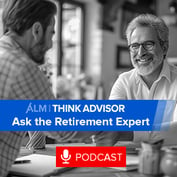A problem with legacy environmental, social and governance products is they can be highly exclusionary, and that means there is an automatic bias that can impair performance against standard benchmarks such as the S&P 500 or Russell 1000 indexes. These are indexes against which many managers are measured and could be the reason why ESG asset flows across advisor channels have been weaker than the tidal wave of funds flowing from institutional investors. So states a paper from FlexShares, “The Integrated Core Approach to ESG: The Case for the Next Generation of ESG Investing.”
Instead, today’s ESG funds should focus on the “holistic” approach of building a portfolio that “has a securities selection methodology that adheres to a total return and risk-adjusted return idea,” said Abdur Nimeri, senior investment strategist for FlexShares ETFs.
“The legacy of [early ESG funds] is still pretty much seared into the minds of a lot of money managers, and so on the retail side that imprint has been pretty significant,” Nimeri says, noting that as far back as the 1990s ESG funds weren’t highly diversified, which impacted performance.
However, today there is more data available that shows impact to shareholder value as well as what variables impact volatility and other factors, he says, adding that as more “gatekeepers of wealth” come online, “we will see more financial advisors come [in], and I imagine, more assets.” He sees ESG practices flowing into all spaces, including ETFs and mutual funds, but variable annuities as well.
Zeroing In With KPIs In designing ESG portfolios, Flexshares focuses on key performance indicators or KPIs, reported by companies in their regulatory filings — basically non-financial disclosures, according to Nimeri.
These KPIs fall into the three ESG buckets. For example, under environmental, KPIs would measure electricity use, total water usage and regulatory risk exposure. Under social, they would measure community spending and human rights policies. For governance, they could track the percentage of women on the board and poison-pill plans.
In using these KPIs, which are extensive, according to the report, it is possible “for asset managers to develop and apply systematic investment strategies that evaluate a company’s risk and opportunities by examining its [ESG] indicators,” the report states. “Combining this type of information with traditional financial analysis and security selection is a textbook example of ESG integration.”









 January 31, 2019 at 11:00 AM
January 31, 2019 at 11:00 AM









